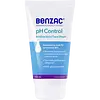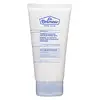What's inside
What's inside
 Key Ingredients
Key Ingredients

 Benefits
Benefits

 Concerns
Concerns

 Ingredients Side-by-side
Ingredients Side-by-side

Water
Skin ConditioningGlycerin
HumectantSodium Cocoyl Glutamate
CleansingGluconolactone
Skin ConditioningCocamidopropyl Betaine
CleansingNiacinamide
SmoothingSodium Citrate
BufferingXanthan Gum
EmulsifyingCitric Acid
BufferingSodium Hydroxide
BufferingPropanediol
SolventZinc Gluconate
Skin ConditioningMandelic Acid
AntimicrobialGlycolic Acid
BufferingSodium Cocoyl Alaninate
Caprylyl Glycol
EmollientParfum
MaskingSodium Chloride
MaskingWater
Skin ConditioningLauryl Hydroxysultaine
CleansingDisodium Laureth Sulfosuccinate
CleansingPotassium Cocoyl Glycinate
Acrylates Copolymer
Sodium Lauryl Sulfoacetate
CleansingPanthenol
Skin ConditioningSerine
MaskingAllantoin
Skin ConditioningGlycerin
HumectantCocamide Mea
EmulsifyingSodium Chloride
MaskingSodium Sulfate
Potassium Hydroxide
BufferingPotassium Cocoate
EmulsifyingCitric Acid
BufferingTetrasodium EDTA
Sodium Benzoate
MaskingCaprylyl Glycol
EmollientTitanium Dioxide
Cosmetic ColorantCI 77891
Cosmetic ColorantRosmarinus Officinalis Leaf Oil
MaskingCitrus Aurantifolia Oil
CleansingMelaleuca Alternifolia Leaf Oil
AntioxidantCitrus Aurantium Bergamia Fruit Oil
MaskingEucalyptus Globulus Leaf Oil
PerfumingWater, Lauryl Hydroxysultaine, Disodium Laureth Sulfosuccinate, Potassium Cocoyl Glycinate, Acrylates Copolymer, Sodium Lauryl Sulfoacetate, Panthenol, Serine, Allantoin, Glycerin, Cocamide Mea, Sodium Chloride, Sodium Sulfate, Potassium Hydroxide, Potassium Cocoate, Citric Acid, Tetrasodium EDTA, Sodium Benzoate, Caprylyl Glycol, Titanium Dioxide, CI 77891, Rosmarinus Officinalis Leaf Oil, Citrus Aurantifolia Oil, Melaleuca Alternifolia Leaf Oil, Citrus Aurantium Bergamia Fruit Oil, Eucalyptus Globulus Leaf Oil
 Reviews
Reviews

Ingredients Explained
These ingredients are found in both products.
Ingredients higher up in an ingredient list are typically present in a larger amount.
Caprylyl Glycol is a humectant and emollient, meaning it attracts and preserves moisture.
It is a common ingredient in many products, especially those designed to hydrate skin. The primary benefits are retaining moisture, skin softening, and promoting a healthy skin barrier.
Though Caprylyl Glycol is an alcohol derived from fatty acids, it is not the kind that can dry out skin.
This ingredient is also used as a preservative to extend the life of products. It has slight antimicrobial properties.
Learn more about Caprylyl GlycolCitric Acid is an alpha hydroxy acid (AHA) naturally found in citrus fruits like oranges, lemons, and limes.
Like other AHAs, citric acid can exfoliate skin by breaking down the bonds that hold dead skin cells together. This helps reveal smoother and brighter skin underneath.
However, this exfoliating effect only happens at high concentrations (20%) which can be hard to find in cosmetic products.
Due to this, citric acid is usually included in small amounts as a pH adjuster. This helps keep products slightly more acidic and compatible with skin's natural pH.
In skincare formulas, citric acid can:
While it can provide some skin benefits, research shows lactic acid and glycolic acid are generally more effective and less irritating exfoliants.
Most citric acid used in skincare today is made by fermenting sugars (usually from molasses). This synthetic version is identical to the natural citrus form but easier to stabilize and use in formulations.
Read more about some other popular AHA's here:
Learn more about Citric AcidGlycerin is already naturally found in your skin. It helps moisturize and protect your skin.
A study from 2016 found glycerin to be more effective as a humectant than AHAs and hyaluronic acid.
As a humectant, it helps the skin stay hydrated by pulling moisture to your skin. The low molecular weight of glycerin allows it to pull moisture into the deeper layers of your skin.
Hydrated skin improves your skin barrier; Your skin barrier helps protect against irritants and bacteria.
Glycerin has also been found to have antimicrobial and antiviral properties. Due to these properties, glycerin is often used in wound and burn treatments.
In cosmetics, glycerin is usually derived from plants such as soybean or palm. However, it can also be sourced from animals, such as tallow or animal fat.
This ingredient is organic, colorless, odorless, and non-toxic.
Glycerin is the name for this ingredient in American English. British English uses Glycerol/Glycerine.
Learn more about GlycerinChances are, you eat sodium chloride every day. Sodium Chloride is also known as table salt.
This ingredient has many purposes in skincare: thickener, emulsifier, and exfoliator.
You'll most likely find this ingredient in cleansers where it is used to create a gel-like texture. As an emulsifier, it also prevents ingredients from separating.
There is much debate on whether this ingredient is comedogenic. The short answer - comedogenic ratings don't tell the whole story. Learn more about comegodenic ratings here.
The concensus about this ingredient causing acne seems to be divided. Research is needed to understand if this ingredient does cause acne.
Scrubs may use salt as the primary exfoliating ingredient.
Learn more about Sodium ChlorideWater. It's the most common cosmetic ingredient of all. You'll usually see it at the top of ingredient lists, meaning that it makes up the largest part of the product.
So why is it so popular? Water most often acts as a solvent - this means that it helps dissolve other ingredients into the formulation.
You'll also recognize water as that liquid we all need to stay alive. If you see this, drink a glass of water. Stay hydrated!
Learn more about Water